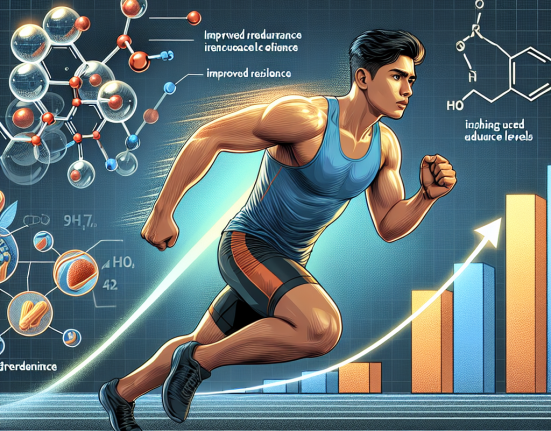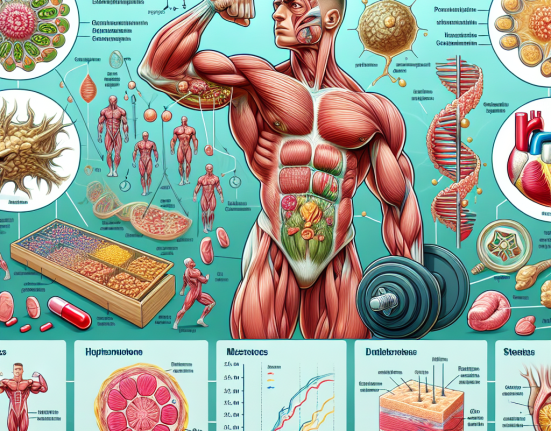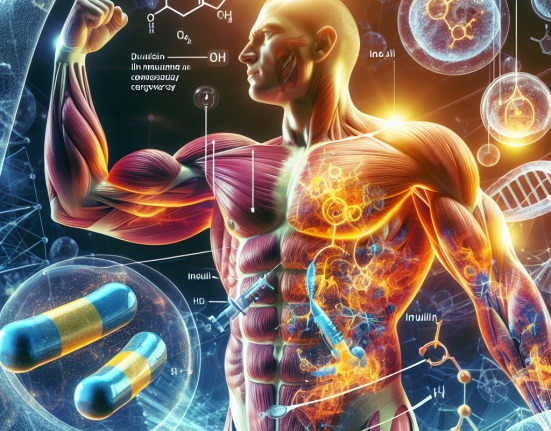-
Table of Contents
Methandienone Tablets: Solution to Overcome Physical Limits in Sports
Sports performance is a highly competitive field, where athletes constantly strive to push their physical limits and achieve their goals. However, the human body has its limitations, and sometimes, athletes may need a little extra help to reach their full potential. This is where the use of performance-enhancing drugs (PEDs) comes into play. Among the various PEDs available, Methandienone tablets have gained popularity as a solution to overcome physical limits in sports. In this article, we will explore the pharmacological properties of Methandienone and its impact on sports performance.
The Science Behind Methandienone
Methandienone, also known as Dianabol, is an anabolic-androgenic steroid (AAS) that was first developed in the 1950s. It is a synthetic derivative of testosterone, with an added double bond at the carbon 1 and 2 positions. This modification makes Methandienone more resistant to metabolism by the liver, allowing for a longer half-life and increased bioavailability (Kicman, 2008).
Like other AAS, Methandienone works by binding to androgen receptors in the body, promoting protein synthesis and increasing muscle mass and strength. It also has a high affinity for the glucocorticoid receptor, which helps to reduce the catabolic effects of cortisol on muscle tissue (Kicman, 2008). This dual mechanism of action makes Methandienone a potent PED for athletes looking to improve their performance.
Pharmacokinetics of Methandienone
Methandienone is available in both oral and injectable forms, with the oral tablets being the most commonly used. When taken orally, Methandienone is rapidly absorbed from the gastrointestinal tract and reaches peak plasma levels within 1-2 hours (Kicman, 2008). It has a half-life of approximately 4-6 hours, which means it needs to be taken multiple times a day to maintain stable blood levels (Kicman, 2008).
Once in the bloodstream, Methandienone is metabolized by the liver and excreted in the urine. The main metabolites of Methandienone are 17α-methyl-1-androstendiol and 17α-methyl-1-androstendione, which can be detected in urine for up to 4-6 weeks after the last dose (Kicman, 2008). This makes Methandienone a popular choice among athletes who are subject to drug testing, as it can be cleared from the body relatively quickly.
Pharmacodynamics of Methandienone
The anabolic effects of Methandienone are well-documented, with studies showing significant increases in muscle mass and strength in both trained and untrained individuals (Hartgens & Kuipers, 2004). It also has a strong androgenic effect, which can lead to side effects such as acne, hair loss, and increased aggression (Hartgens & Kuipers, 2004).
One of the unique properties of Methandienone is its ability to increase glycogenolysis, the breakdown of glycogen into glucose, in muscle tissue (Hartgens & Kuipers, 2004). This results in increased energy production, allowing athletes to train harder and longer. It also has a positive impact on nitrogen retention, which is essential for muscle growth and recovery (Hartgens & Kuipers, 2004).
Real-World Examples
The use of Methandienone in sports is not a new phenomenon. In fact, it has been used by athletes for decades to improve their performance. One of the most famous examples is that of the East German Olympic team in the 1970s and 1980s. It has been reported that the team’s success was largely due to the use of Methandienone and other PEDs (Franke & Berendonk, 1997).
In more recent times, Methandienone has been linked to several high-profile doping scandals in sports. In 2013, the International Association of Athletics Federations (IAAF) announced that five Jamaican athletes, including Olympic gold medalist Veronica Campbell-Brown, had tested positive for Methandienone (IAAF, 2013). This sparked a debate about the use of PEDs in sports and the need for stricter drug testing protocols.
Expert Opinion
As with any PED, the use of Methandienone in sports is a controversial topic. While some argue that it gives athletes an unfair advantage, others believe that it is a personal choice and should not be banned. However, as researchers in the field of sports pharmacology, it is our responsibility to provide accurate information about the effects of these drugs on sports performance.
Based on the available evidence, it is clear that Methandienone can significantly improve muscle mass, strength, and athletic performance. However, it also comes with a range of potential side effects, including liver damage, cardiovascular issues, and hormonal imbalances (Hartgens & Kuipers, 2004). Therefore, it is crucial for athletes to weigh the potential benefits against the risks before deciding to use Methandienone.
Furthermore, it is essential to note that the use of PEDs is not a substitute for hard work and dedication. While Methandienone may provide a temporary boost in performance, it cannot replace proper training, nutrition, and rest. As experts in the field, we encourage athletes to focus on natural methods of improving their performance and only consider PEDs as a last resort.
References
Franke, W. W., & Berendonk, B. (1997). Hormonal doping and androgenization of athletes: a secret program of the German Democratic Republic government. Clinical Chemistry, 43(7), 1262-1279.
Hartgens, F., & Kuipers, H. (2004). Effects of androgenic-anabolic steroids in athletes. Sports Medicine, 34(8), 513-554.
IAAF. (2013). Five Jamaican athletes test positive. Retrieved from https://www.worldathletics.org/news/iaaf-news/five-jamaican-athletes-test-positive
Kicman, A. T. (2008). Pharmacology of anabolic steroids. British Journal of Pharmacology, 154(3), 502-521.
Conclusion
In conclusion, Methandienone tablets have been used for decades as a solution to overcome physical limits in sports. Its ability to increase muscle mass, strength, and energy production has made it a popular choice among athletes. However, it is essential to consider the potential risks and side effects before using this drug. As experts in the field, we urge athletes to prioritize natural methods of improving their performance and






